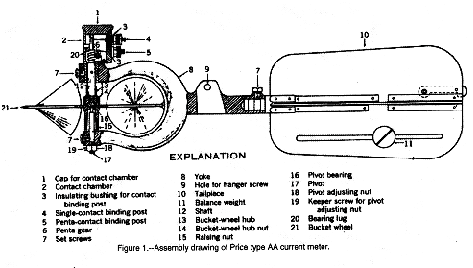

| Price type AA current meter | Price pygmy current meter | ||
|---|---|---|---|
| Velocity, in feet per second |
Accuracy, in percent of standing rating |
Velocity, in feet per second |
Accuracy, in percent of standard rating |
| METERS SELECTED AT RANDOM | |||
|---|---|---|---|
| Meter Type | Pass | Fail | Percent Failing |
| METERS HAVING NON-RANDOM SELECTION | |||
| Meter Type | Pass | Fail | Percent Failing |
| METERS HAVING UNKNOWN SELECTION CRITERIA | |||
| AA Meters | Pygmy Meters | |||||||
|---|---|---|---|---|---|---|---|---|
| All | Random | Non-Random | Unknown | All | Random | Non-Random | Unknown | |
| Number | ||||||||
| Average maximum departure, in percent |
||||||||
| Maximum departure in group, in percent |
||||||||